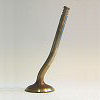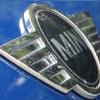Simply saying that there should be vacuum operating the vac advance at idle and that there should be noticeable difference in idle speed is wrong.
There are two types of vacuum take off on the HIF carbs, and, depending on the engine/ fuel type will determine which vacuum take off is used.
Manifold depression is the full vacuum that the manifold is subject to, after the throttle.
Throttle edge depression is a partial vacuum, its is neither manifold vacuum or atmospheric.
Throttle edge depression, I know for a fact, is used on all non Cooper 1275 engines fitted with a HIF38 carb. At warm idle there will be little or no advance. When the engine is cold and the choke is in operation or at part throttle cruse there will be some vacuum advance. This is because the vac take off on the carb is located right at the throttle edge and as the throttle moves over the take off port, the vacuum changes.
Why reduce the advance at idle and increase it on choke or cruse? Its all to do with ecconomy and emissions. Reducing the ignition advance at idle helps rduce HC emissions and increasing advance on choke helps rich fuel mixture burn at low throttle openings. Increasing the advance at cruse increases engine reponse and ecconomy. It also has a lot to do with the charachteristices of unleaded fuel, as well as the carbon emissions canister purge. The throttle edge depression shuts off the vacuum valve on the carbon canister, preventing fuel vapours being drawn into the engine at idle.
I looked into this and spoke with Southern Carburettors and Burlen almost 14 years ago

As for the Cooper RSP 1275s with a HIF44, I cannot comment.
All I am getting at is that not everything is what most say it is

Oh and I forgot to say that I would be surprised if you could draw as deep a vacuum with your mouth as the engine draws at idle

AND, im not suggesting there is nothing wrong, there might well be, but on the other hand, there might not
Edited by Sprocket, 04 March 2010 - 10:53 PM.




















